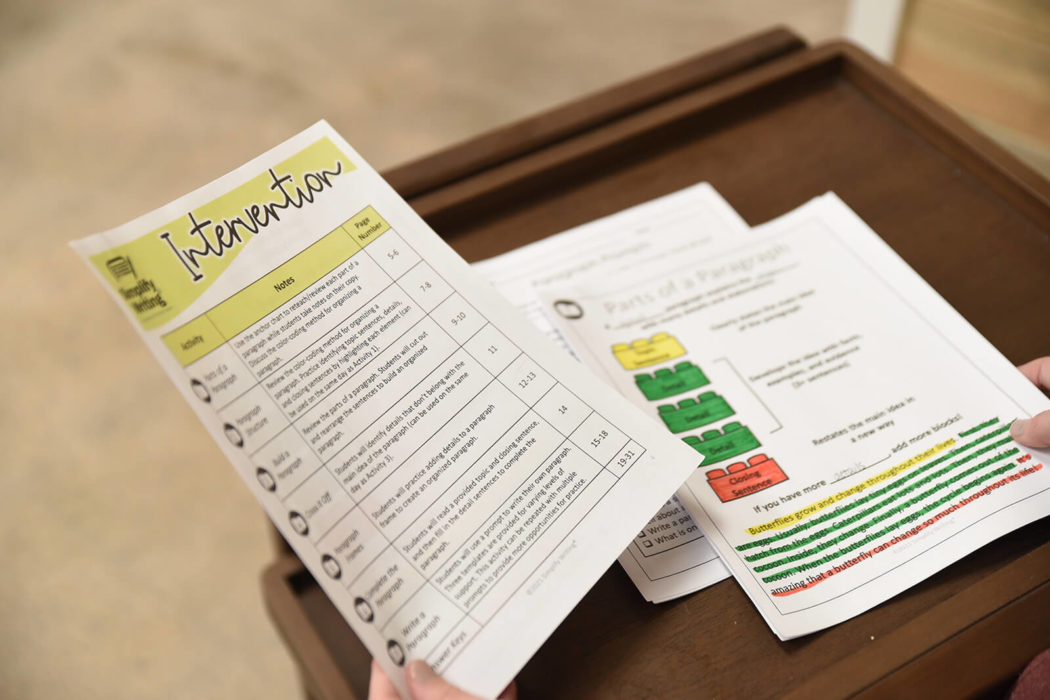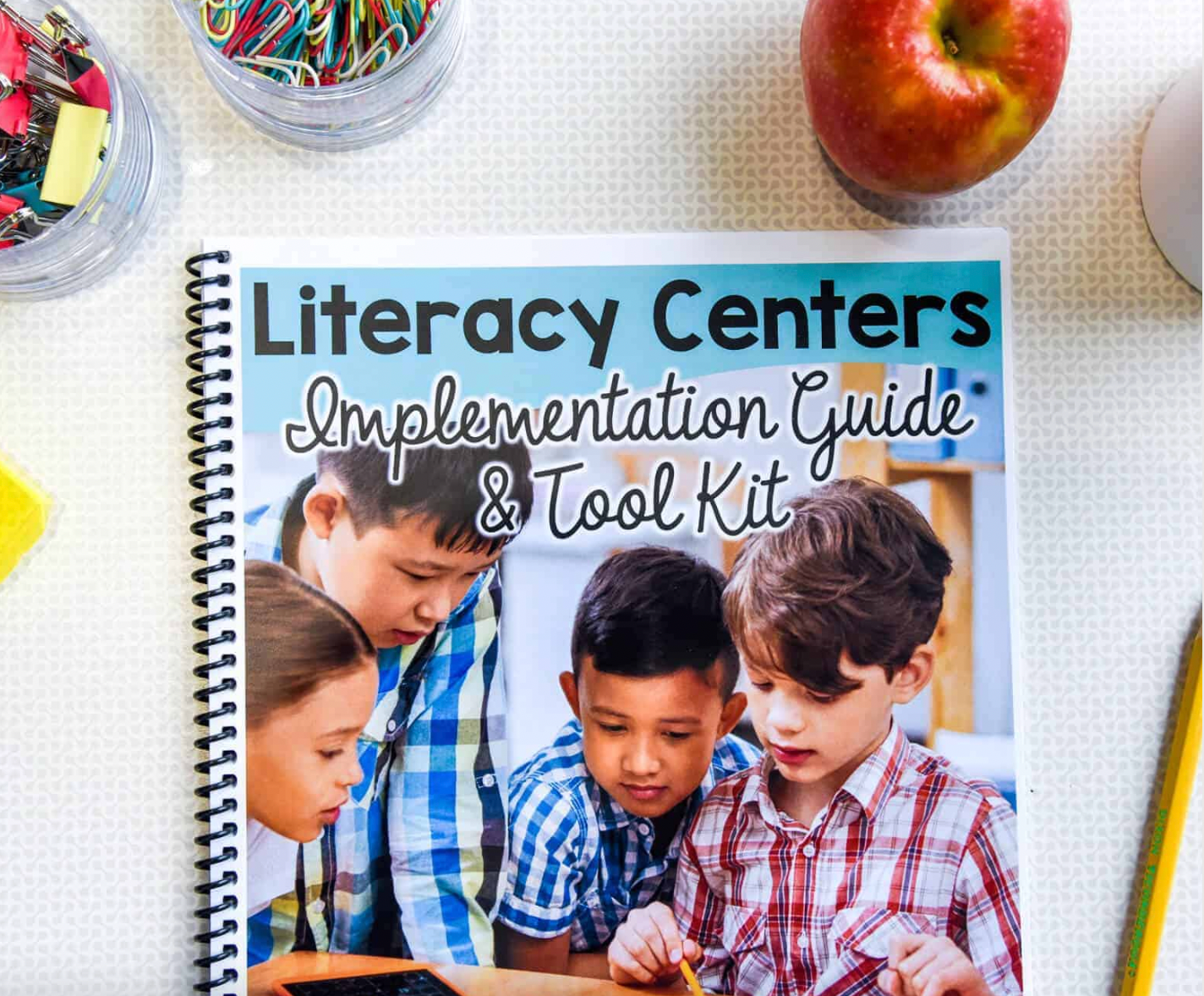We are heading into a new school year, and one of the things on your mind is probably what’s going to happen when you give your students their first writing assignment. We all know that year after year, when we get to writing time, we have some moans and groans and some students who struggle to write. So, I’m going to share how you can use a writing assessment during the first couple of weeks of school to know what struggles your students will have, prepare to address them, and set your students up for success.
Make sure you grab my free back-to-school writing assessment resources here!
The best thing to do during back-to-school is to spend the first five days doing 10-15 minutes of journaling time every day. Choose fun journal prompts they can relate to and are excited about to set students up for success. If you have a lot of students struggling with reading and writing, are below grade level, are learning English, or are in special education, using picture prompts is helpful.
These journal entries are a way to give a pre-assessment without multiple-choice questions and essays. Those things are too stressful for back-to-school. So, we’ll say no to formal assessments but use journal prompts for five days. After that, you want all of those samples put together so you can use them to look for a few key things that will help you plan the second week of school and beyond.
When you get your student samples, you’re not going to grade them. Instead, you’re going to look through them for a few key things to help you and your students prepare for your first writing unit. In addition, it will help you plan throughout the year for writing conferences, writing interventions, and plan for how you should modify lessons.
Back to school writing assessment
There are three key categories we are going to focus on.
1. Big Picture Items
The first part of this writing assessment is the big picture items. These are areas you notice the whole group is struggling. You should start to address these before starting your first unit. Examples of big picture items include sentence writing, paragraph writing, interest, stamina, complexity of ideas, and grammar. You want to think about the things that are getting in the way of your students getting to the writing.
We know that if students cannot write a sentence, it will hinder our opportunity to teach them on grade level. However, we know most students aren’t on grade level, so it’s not a surprise when they struggle in this area, and the same is true with paragraph writing. So, if your whole class is struggling, use the spreadsheet to note that along with what you will focus on in week two.

Interest and stamina are essential. If students don’t have the confidence, aren’t interested, or don’t want to write, then we need to address it. I often use a short five day stamina unit that takes 10-15 minutes daily. We do quick journal prompts, and the students graph how long they can write. Then, they can compete with themselves to write for more extended periods. We also talk about what to do if they get stuck and don’t know what else to write and ideas on how to get back to writing.
Complexity of ideas is important but easy to miss when we focus on grammar and paragraph writing. We can overlook the fact that our students can’t create complex ideas. So, we need to build in more opportunities for idea generation and how to discuss and research to help get more complex ideas.

2. Individual Struggles
In this tab in the spreadsheet, we list out every student’s name. Then, we check off skills where they are struggling. We can also list specific grammar skills. If it’s already on your Big Picture Items list, you don’t need to include it here.
If most students are okay with writing stamina, but you have three kids who struggle to write, mark it off on this list. That way, you know when it’s time for student writing, you will need to provide more support to them. You may need to pull them back into a small group. Intervention is such an important piece of writing instruction. If you don’t have time and can’t do writing conferences, sub in student writing time and work on intervention units with 3-4 students at a time.

You can work on these skills in their writing without having them show you their writing because you know it was something they struggled with every day of the journaling.
3. Grammar Knockout List
The final part of this writing assessment is the Grammar Knockout list. It’s a running list of things we want to tackle that will make a huge difference in student writing. We will list the things we notice the whole group has a problem with down to the things that if we don’t get to them, it’s not a big deal. These aren’t from grade-level standards, but they are things we need to fill in. When students are behind, it destroys their reading and writing ability.
At the top of the list, we put the skill most students in the class struggle with that impedes their writing. If it’s a simple grammar skill that doesn’t make it hard to read their writing, then don’t put it at the top of the list. On the other hand, if it’s something like punctuation, capitalization, or run-on sentences that you repeatedly see in the whole group, put it at the top.
This is your wish list of the things you want to work in throughout your writing units. You will go down the list until you’ve checked off at least a few of them and seen improvement in your students’ grammar.
Five days of journaling provides useful information about the struggles you’ll need to tackle in your writing unit. You’ll be well prepared to address these struggles.

How to address these struggles
You can’t spend weeks and weeks focusing on these struggles, and you can’t worry about teaching them separately because they happen within the writing process. So, there are a lot of ways you can modify your curriculum. For example, you could change your expectations for students or reteach things they struggle with.
You can also chunk things into bite-sized pieces if it’s something you know they are going to struggle with. This is especially helpful if it’s something on grade level, but they’ve been doing every year since 2nd or 3rd grade. Again, it can help to backtrack and work on smaller pieces at a time.
These modifications can help your first units go a lot smoother.
You can also create sentence frames or paragraph frames. You can still teach them to stay on the topic they’re supposed to be writing about, but you could create a frame to show them how to do their writing. This will help scaffold the lesson and get extra support in the area where they are struggling.
Working with individual students
When you have just a few students struggling in an area, use some of the student writing time to pull them into a small group and work on those skills with them. While this does take from their writing time, they need that extra support and intervention. You can also have them use that intervention in their writing piece if you modify the expectations. For example, those students would work on one body paragraph while the others are working on two or three paragraphs.
I always ensure the second week of school is set aside for anything huge we need to address before going on to the first unit. This includes things like writing stamina, interest, and confidence. I want to take the time to ease the students into writing and ensure they can write for extended periods. I want writing to be a positive experience for students and not something stressful.
If you’re interested in getting this quick and easy writing assessment and spreadsheet you can use in your classroom the first week of school, you can download it here. Then, use them in your classroom and let me know how it goes. Share your plan for the first week of school in the comments.


